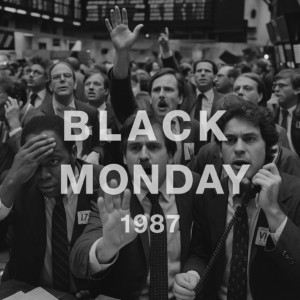Gold prices have experienced a sharp decline this week, closing at $2413 on Friday before falling to a low of $2304.60 on Tuesday and rebounding slightly to $2317 today, Wednesday. However, the short-term behavior of the yellow metal suggests that the correction is over, and the price per ounce has now risen to $2340.
Despite this recent dip, many economists remain bullish on gold, predicting that the ounce will continue to rise to $3,000, representing a potential increase of over 28% from the current price. Among the bullish factors are the gold purchases by the Chinese central bank, which has been increasing its gold reserves for 17 consecutive months and is unlikely to stop anytime soon.
In fact, China’s gold holdings as a percentage of total reserves stood at 4.3% in March, which is significantly lower than other central banks, where the global average is 13%, and the United States holds 70% of its reserves in gold.
China’s shift away from the US is the reason behind its slow but steady shift from dollar reserves to gold, and it also signals the end of the yuan as a potential second reserve currency (prompting other central banks to also shift to gold).”
In addition to the continued gold buying by the Chinese central bank, Rosenberg believes there are other factors that could help push gold prices higher, including increased investor demand through gold ETFs, as geopolitical tensions remain elevated. On the other hand, if the Federal Reserve starts cutting interest rates, it could also help boost demand for gold.
Oil Steady as Market Weighed by US Demand Concerns and Middle East Conflict
Oil prices showed little change on Thursday as fuel demand weakened in the United States, the world’s largest oil consumer, amid signs of a slowing economy and concerns about a widening Middle East conflict.
Data from the US Energy Information Administration (EIA) on Wednesday showed that gasoline demand in the week ending April 19 fell 2.8% from the previous week and 11% from a year ago. This comes amid signs of a slowdown in US business activity in April. Inflation and employment data came in stronger than expected, suggesting that the Federal Reserve is more likely to postpone an expected interest rate cut, weighing on economic sentiment.
The current pullback in benchmark crude prices, after breaking above $90 a barrel, is due to a refocusing of market sentiment on the global economic headwinds against the backdrop of geopolitical tensions.” Regardless of geopolitical factors, prices this quarter will be driven by factors including supply cuts from major producers, economic data from China and the eurozone, as well as expectations of rising demand as the summer season approaches in the northern hemisphere amid expectations of lower supply.
US GDP and personal consumption expenditure data for March, due Thursday and Friday, will provide clearer indications of the Fed’s policy stance on interest rates.
Yen Falls to 34-Year Low as Intervention Talk Grows
The yen fell to 155 against the dollar on Thursday as the Bank of Japan began a two-day meeting to set interest rates, raising concerns among traders about a potential intervention from Tokyo to support the currency while monetary policy discussions are still ongoing.
After trading in a tight range for the past few days, the dollar finally broke above the 155 yen level for the first time since 1990 in the previous session. The US currency hit its highest level in 34 years at 155.74 yen on Thursday.
Speculation is mounting about Japanese government intervention to support the yen, which has held back the dollar’s rise to that level, which some market participants see as the trigger for Tokyo to intervene. As the Bank of Japan meets to discuss monetary policy, expectations are that the central bank will keep its short-term interest rate target unchanged at the end of the meeting on Friday after ending its negative interest rate policy last month.
Bank of Japan Governor Kazuo Ueda said this week that the central bank would raise interest rates again if inflation accelerates towards its 2% target, as expected. The dollar is recovering some of its losses against other currencies after a slight pullback earlier in the week following strong business activity data from the eurozone and the UK, which pushed the euro and sterling higher.
The euro rose 0.1% in the latest trading to 1.07085 dollars, edging away from a more than one-week high hit on Wednesday, while sterling was little changed at 1.24675 dollars. The dollar index edged down slightly to 105.77 points against a basket of currencies, but moved away from its nearly two-week low hit in the previous session.
For further insights, check OneRoyal’s Facebook, Instagram, and Twitter pages and expand your understanding of financial markets with global perspectives. Staying informed is crucial in the ever-evolving world of finance.
Disclaimer: This article is not investment advice or an investment recommendation and should not be considered as such. The information above is not an invitation to trade and it does not guarantee or predict future performance. The investor is solely responsible for the risk of their decisions. The analysis and commentary presented do not include any consideration of your personal investment objectives, financial circumstances, or needs.





